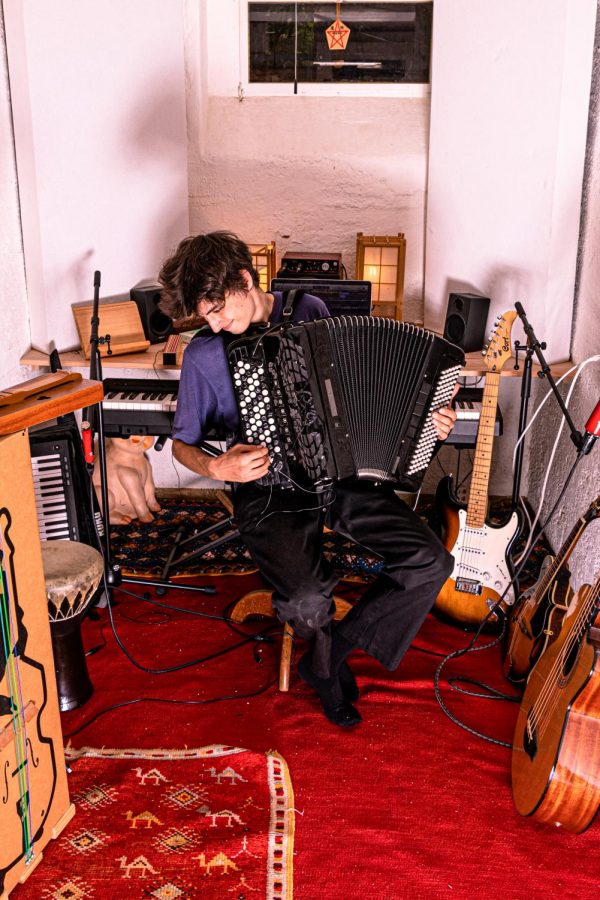How Musicians Around the World are Electrifying Jazz
October 27, 2021
Highschool to college-age individuals from around the world are taking jazz in new directions. In the past few years, these musicians have been mixing jazz with other genres, thus putting their own unique spin on it and revitalizing jazz. One new subgenre of jazz, dubbed “New Jazz,” “Metabop,” or “Jazztronica” (jazz + electronic music), mixes fast, virtuosic jazz solos with hip-hop drum beats, clean electronic sounds, and Internet meme culture.
Around this music, a subculture has emerged in the past few years, composed of short videos on sites such as Instagram, TikTok and Youtube. These videos feature teens playing this new style of jazz. The genre often favors short, fast-paced videos rather than longer, drawn out musical statements. Because of the accessibility of the Internet, these musicians are finding and collaborating with each other. A Los Angeles-based duo that has surfaced fairly recently at the forefront of this genre is DOMi and JD Beck. The duo consists of the twenty-year-old pianist Domi Degalle, and seventeen-year-old wunderkind drummer JD. They have been gaining a following for posting to their YouTube channel jazz clips that are equal parts virtuosic and humorous. In addition to getting millions of views on YouTube, the group has won over the respect of heavy hitters in the jazz-funk world such as Thundercat, Anderson .Paak, and, most recently, the jazz legend Herbie Hancock.
Another emerging musician in the Jazztronica scene is the twenty-year-old Switzerland-based accordionist Anatole Muster. He gained a following in the last two years by posting short videos of himself playing accordion along with memes and other musicians. He also released a short album in 2020 entitled “Outlook.” I got a chance to interview him about this style of music and how he got started playing it.
According to Muster, his love for making electronic music started early. When he was 12, he started playing around with the music-making program GarageBand. Creating his own tracks digitally, he developed an interest for electronic music and soundscapes. Then, when he was 16, he got into 70s jazz-rock groups such as Spyro Gyra. This instilled in him his love for synth solos and jazzy chord progressions. These two things led him to electronic jazz. Unlike many contemporary jazz musicians, however, Muster didn’t start with classic jazz. He told me that he loses interest in straight-ahead acoustic jazz and enjoys it much more when it has layers of electronic sounds. He said with a laugh that “I think I’ll get into [acoustic, instrumental jazz] two years into college probably.”
According to Muster, the defining characteristics of this new type of jazz include well-produced music (layers of different instruments and sounds mixed together) and sophisticated harmonic content (complicated jazz chords and improvised solos). He told me that “the production standard is extremely high, but the harmonic language is not faulty – it’s really elaborated as well.” He remarked that this is due in part to the collaboration between academic jazz theorists and experienced electronic producers, who both contribute their talents to this new scene. Muster notes that the genre is heavily influenced by the short attention spans of most Gen-Zers. Most tracks by DOMi and JD or Muster are less than a minute in length, and are usually insanely uptempo and mimic the electronic trap drum beats common in rap music, which is another important influence for musicians like these.
I compiled a YouTube playlist of the essential songs of this genre that you should definitely check out: just go to bit.ly/newjazzbuzzer. The future of jazz is in the hands of these young musicians, and it will be exciting to hear the music that will come in the next few years.


















